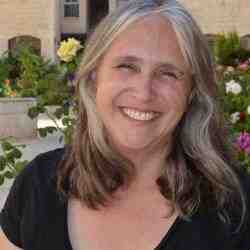Introduction
Lajos Orosz is introducing an approach to public education that addresses fundamental trends of inequality and creates opportunities for marginalized children to reap the benefits of mainstream education.
The New Idea
Lajos recognizes that the Hungarian system of placing children perceived to be slow, problematic, or disabled into remedial schools dramatically affects these children's classroom experience, quality of education, and future opportunities. Such decisions can permanently set a child on a track behind his peers. Lajos wants to reverse this trend and sees that involving the community can help to do this. He is building a community-based cooperative education into the curriculum and linking schools in networks both to build on their respective strengths and to work together, leveraging the value and expertise of each school. Specialized services, like advanced information technology, a traveling educational warehouse, and integration summer camps benefit all children in the inclusive system. Lajos is also creating attractive, noncompetitive incentives for teachers to encourage the adoption of his instruction methods. He has created services and resources for teachers that not only help them do a better job but also offer a new level of support.
The Problem
By broadening the category of "special needs" to include minority, poor, and difficult children, remedial schools are used as a dumping ground for marginalized students. Before entering elementary school, children are screened. Those considered to be problematic, slow, or disabled are immediately retracked into remedial schools. When a child is not able to keep up with classmates in a normal school, they are also moved to remedial schools, a trend that has been increasing since the 1970s. A factor complicating the situation is that once a child enters the remedial school, it is virtually impossible to move out. By the time students are ready to graduate from remedial school, they are ill-prepared to function productively in society.
One consequence of this two-tracked education system is that students in regular schools grow up believing that students from remedial schools are inferior. They see from an early age that those students with differences are moved into substandard schools. Larger prejudices regarding disabled or minority students are reinforced. From the other side, students in remedial schools perceive that they have been deemed unequal. Their path seems defined.
The educational system in Hungary reinforces a permanent underclass. Students graduating from remedial schools may go to vocational schools, but they rarely enter secondary schools. From an early age opportunities are taken away from these children. Without the secondary education, certain jobs are out of reach. Having been at a remedial school stigmatizes students and makes the job search even harder. A variety of social problems can follow: poverty, drug addiction, crime. The situation also increases the chances that these young adults will rely on the state in the future.
The Strategy
Lajos is working to prevent teachers from pushing children out of their classrooms and into remedial schools. He recognizes that a rash decision by a teacher has a dramatic effect on the life of the child. Therefore, Lajos is building the capacity of schools to meet the individual needs of students. He is implementing his idea in clusters of schools that are equipped, trained, and supported to carry out school reform on many different levels.
All schools in the involved cluster are walked through the process of large-scale school reform while being networked with other schools experiencing a similar process. Each school involved has access to new technology, assessment techniques, teaching methods, funding options, and expert advisors. Lajos's first cluster is made up of 10 normal schools, a transformed remedial school, three kindergartens, a few daycare institutions, and a variety of professionals. This cluster is now established as a Small Regional Union of Schools.
Information technology is a critical tool in Lajos's plan. Lajos has designed a new and complex IT system and computer program that ensures follow-up on each child. The system contains all data about the children, their needed care and therapy, information about and for parents, school programs, and free-time activities organized for the institutions within the network. This technical development helps participating schools communicate and attracts others to join the program. The IT system enables each school to design its own content. The Ministry of Education ensures free Internet access to Lajos's program and for all its members.
To ensure access to special equipment, materials, toys, and educational or special services, Lajos designed a traveling warehouse. Today the traveling warehouse is in full operation with 12 traveling teachers. From Lajos's central school, the teachers are all experienced professionals who act as a resource for teachers at the other schools. Through the Internet, teachers can special order certain resources that will be dropped off by the traveling warehouse. Accessories like video cameras, skeletons for science class, or art equipment are rented from the virtual warehouse and are circulated among schools. This is a creative and inexpensive way to meet the needs of teachers.In order to blur the lines between schools, a traveling school has been set up to provide learning opportunities for students at different schools in the cluster. The traveling school works three days a week at times when all member schools and kindergartens offer educational programs or free-time activities. Children are invited to attend any program or activity and are transported by bus from school to school. Children and teachers get to know other students and colleagues from different locations in their cluster.
Lajos also works directly to integrate students from remedial schools into normal schools. He convinces normal schools to accept Roma or children with special needs. Schools are often not aware of the increased state support they are eligible to receive for taking such action. Many are afraid of losing students if they integrate children from remedial schools. To address this problem, Lajos organizes summer camps that integrate children, parents, and teachers before the school year starts. He designs activities to deal directly with issues of discrimination.
Lajos intends for his program to expand to the national level in the next three to five years. He has already identified two schools from which to grow future clusters. He has successfully raised money from a Dutch organization for program expansion that would cover the management of the three school centers. Intending to create educational reform on a national level, Lajos has also taken action outside of schools. A network of cooperating local authorities is being established it will link educational reform to community development plans. Lajos is negotiating with the state regarding a transfer mechanism to move children out of remedial schools into normal schools. Lajos has developed the only state-accredited curriculum for special education. The state's National Disabled Fund wants to create seven model and adaptation centers in Hungary; Lajos's school center in Marcali was one of those chosen. In the future Lajos intends to integrate his approach into Hungary's teacher-training program.
The Person
Lajos's grandmother taught Roma children and often brought them home for a meal. He always remembered his grandmother's care and compassion. In high school, while studying to be a forester, Lajos established a group to oppose the Communist leadership. The opposition circle met in the basement of a nearby remedial school and started a theater group to perform for the students. The circle's activities attracted the local Roma community and facilitated the creation of the first local Roma organization in Barcs.
Because of his early days of activism, Lajos was not considered a loyal citizen to Communist Hungary; as such he was not accepted into university. Instead, he started to teach arts in the remedial school. But because of his honesty regarding his membership in the opposition, he was eventually fired.
He later worked in a state institute for disabled children and completed his higher educational studies in the College of Special Education. After finishing his studies, Lajos was forced to leave the institute because he had confronted the director about his use of inhumane medical treatments to keep young disabled clients silent. Following his military service, Lajos decided to stay and teach in a local primary school.
After becoming the director of a remedial elementary school, called Hétszínvirág (Flower of Seven Colors) in Marcali, Lajos finally felt the opportunity to create an institution based on his own ideas. During that time he realized he needed not only to introduce new programs in his school, but also to transfer these ideas to an institution that could pay attention to all individual needs of students, provide extra training programs and services for teachers, and involve parents and community members.
Lajos realized that transforming one remedial school was not enough. He also realized that the solution was to rid the education system of remedial schools rather than only transforming them. At this point he recognized the need to reform the whole of the Hungarian educational system in order to make everybody understand and accept the idea of integration.
Lajos is a fine arts painter and a father of two.




